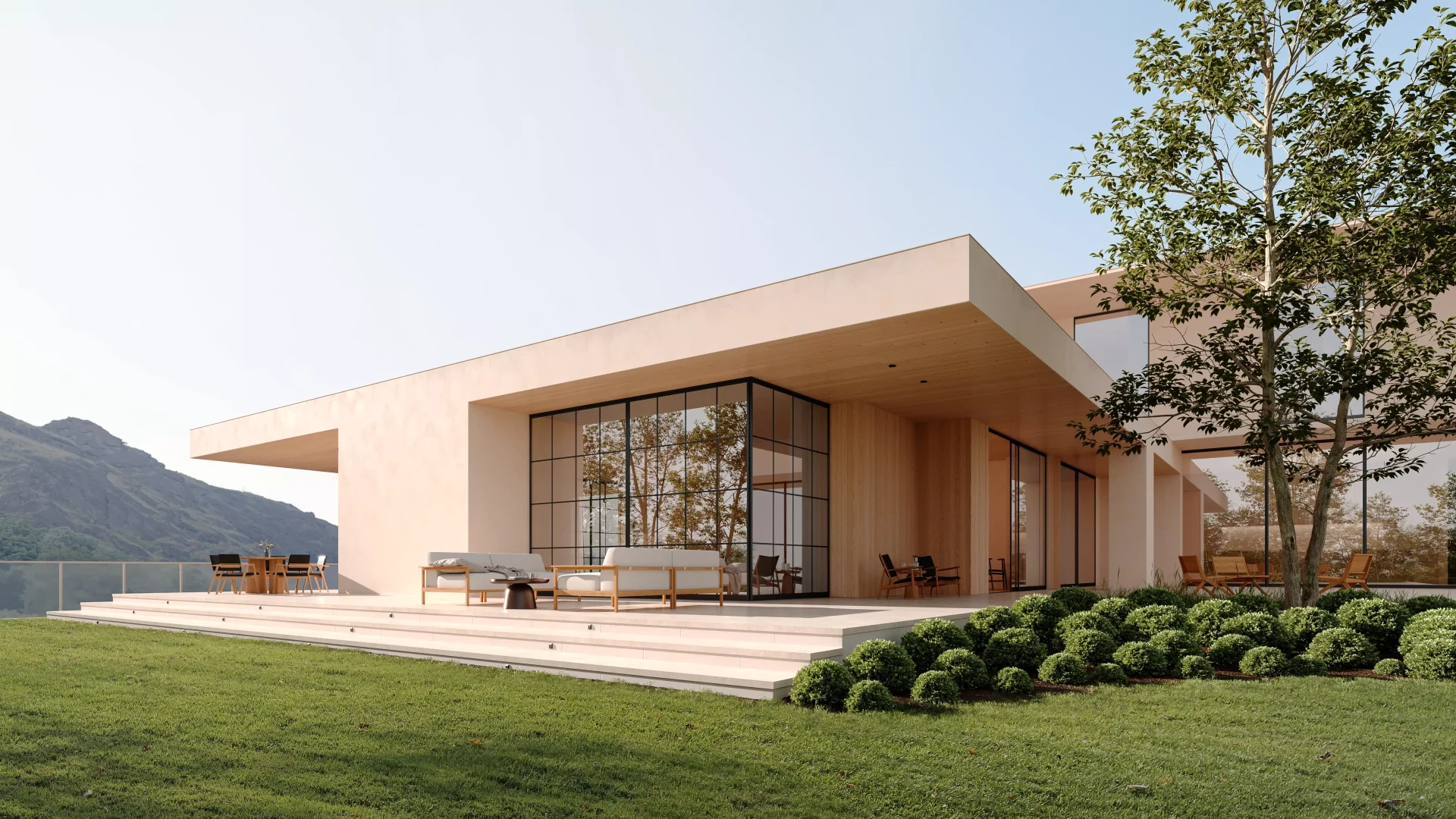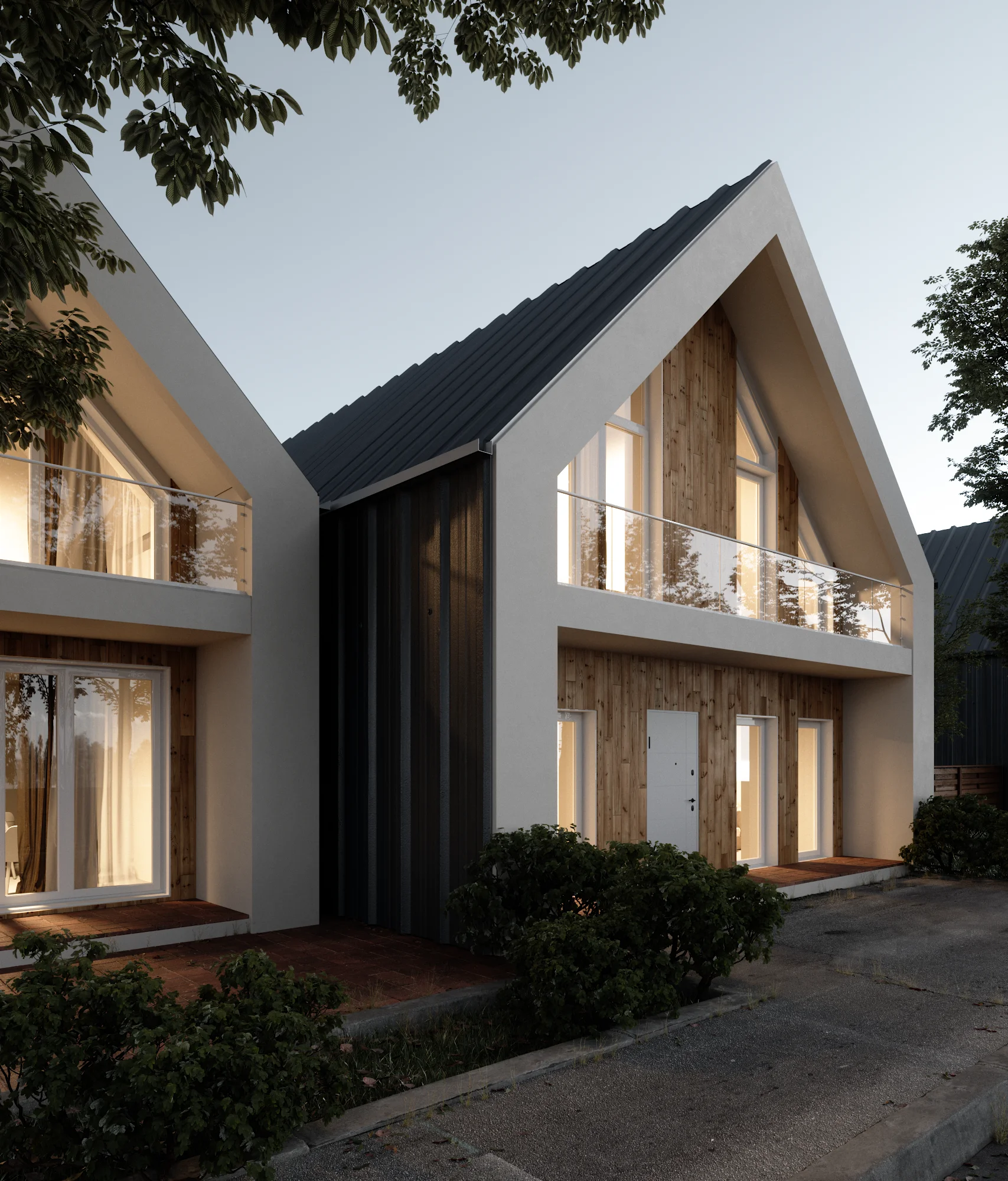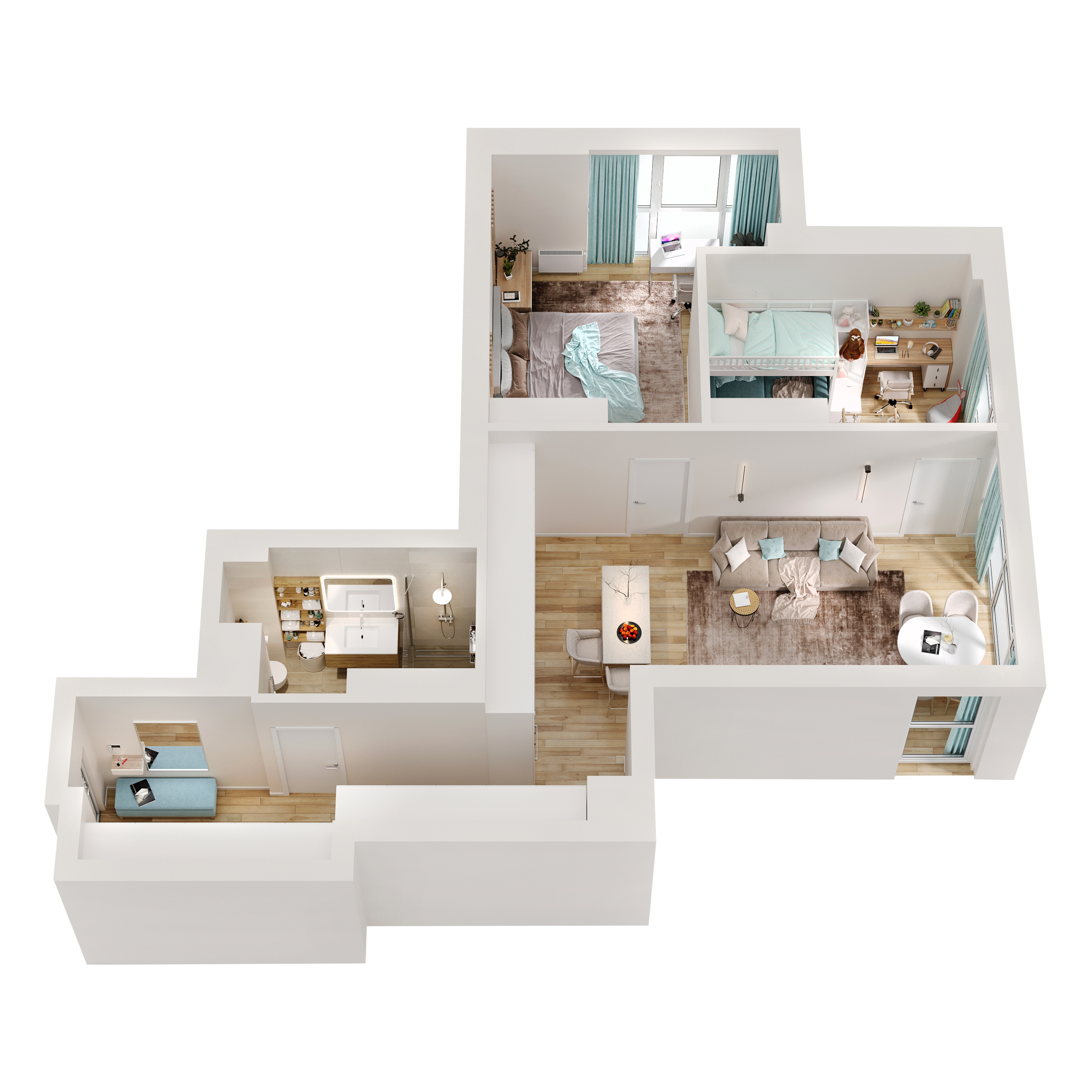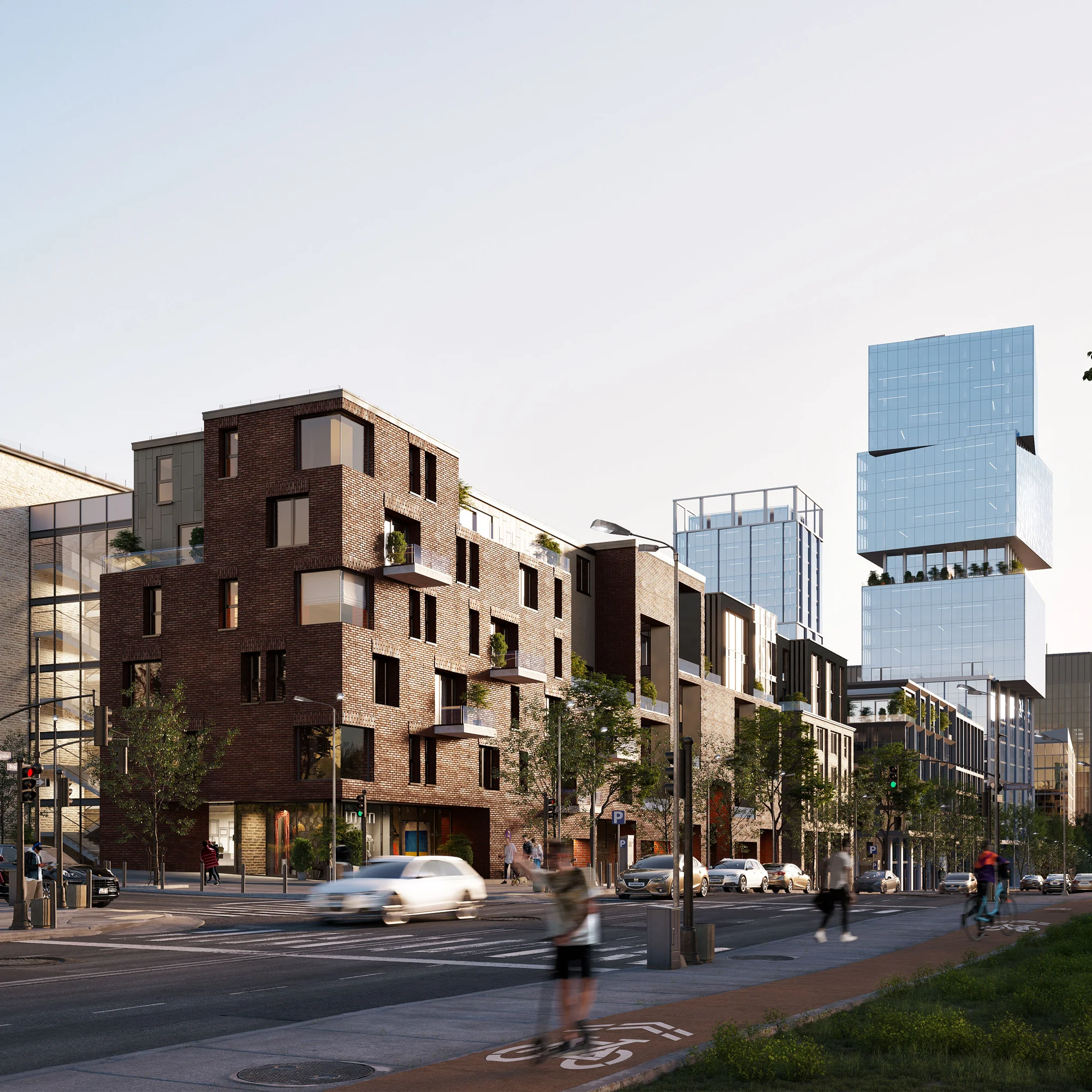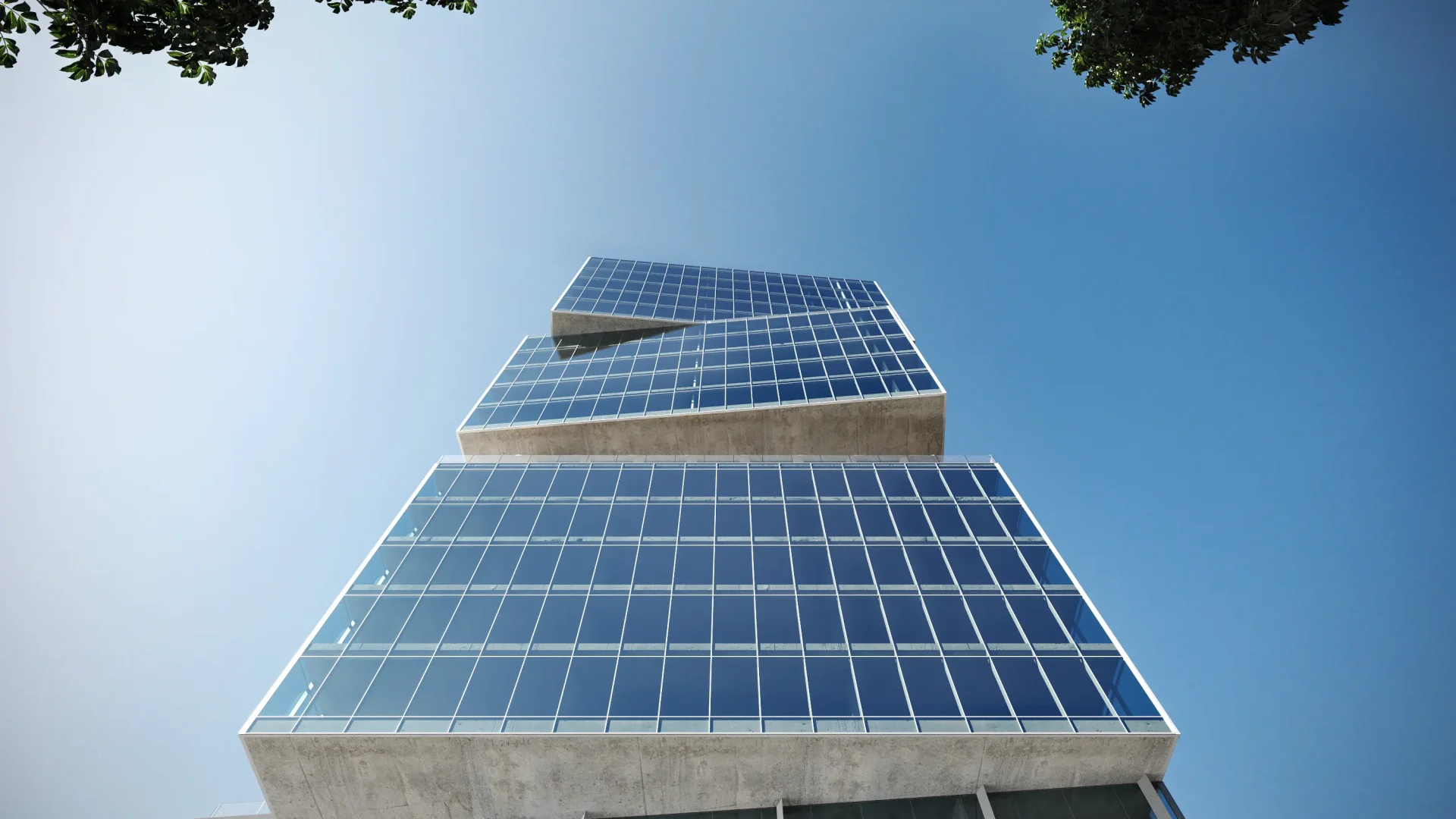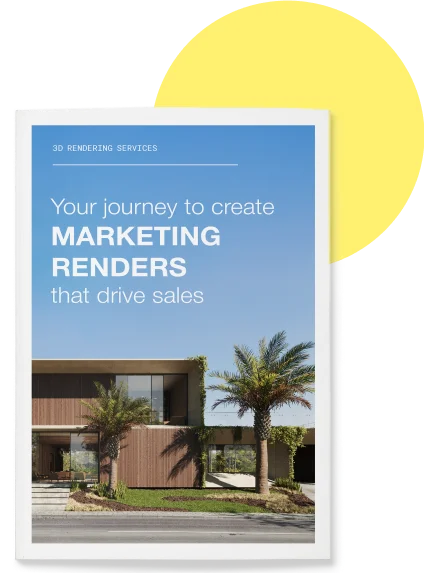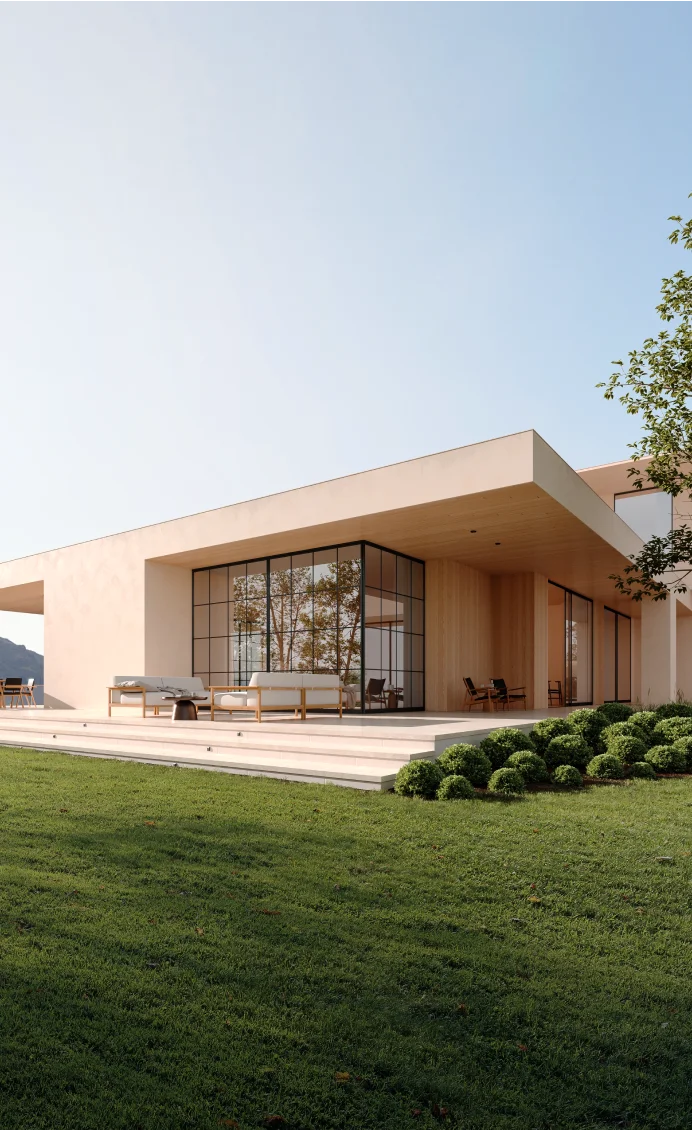Key Takeaways:
- Enhancement of Communication and Presentation: 3D architectural visualization significantly improves communication by transforming abstract concepts into detailed 3D models that foster mutual understanding among all project participants.
- Marketing and Advertising Advantage: With the ability to generate striking, realistic visual content, 3D visualization serves as a powerful marketing tool, setting offerings apart in competitive markets.
- Facilitation of Construction Planning: 3D visualization aids in construction planning, allowing for the exploration and refinement of designs, leading to more efficient planning and execution.
- Early Error Detection and Rectification: Utilization of 3D visualization enables the identification and correction of potential design errors in the early stages, ensuring a smoother construction process.
- Increasing Affordability and Efficiency: Despite misconceptions, 3D architectural visualization is becoming more affordable and accessible, leading to faster design approvals and cost savings on physical models.
With the rapid progress of technology, the field of architecture is undergoing a significant transformation, driven by advanced tools like architectural visualization and 3D visualization. These cutting-edge technologies are revolutionizing the way architects bring complex designs and creative visions to life.
Benefit #1: Enhance Communication and Presentation
One of the foremost advantages is the capacity to dramatically improve communication and presentation within the architecture sphere.
The Role of CGI in Clear and Effective Communication
With the help of computer-generated images, architects can present and explain complex architectural concepts with greater clarity and precision. Rendering software creates detailed, accurate 3D models, turning abstract ideas into tangible, understandable representations. This transformative technology facilitates a shared understanding of project goals and expectations among architects, clients, and other stakeholders.
Bridging the Gap Between Architects and Clients
In the past, a chasm often existed between architects’ intricate designs and clients’ comprehension of them. Today, 3D visualization serves as a bridge, converting complex architectural blueprints into visually appealing, easily comprehensible digital models. This enables clients to fully grasp the spatial attributes and aesthetics of proposed buildings, leading to more informed decisions and satisfying outcomes.
Outperforming Traditional Presentation Materials
The advent of architectural visualization also presents a significant advancement over traditional presentation materials. No longer constrained by static 2D drawings and physical scale models, architects can now offer immersive, interactive experiences through virtual reality. Such technology empowers clients to virtually walk through proposed structures, offering a deeply engaging and convincing demonstration. This has proven particularly beneficial in the real estate industry, where the power of visualization effectively boosts sales and client satisfaction. The increasingly sophisticated rendering software enables the creation of realistic, high-definition 3D visualizations, revolutionizing architectural presentations and client experiences.
Benefit #2: Powerful Marketing and Advertising Tool
3D architectural visualization is not just a design tool; it’s also a potent instrument for marketing and advertising, offering numerous benefits in a highly competitive market.
The Role of 3D Visualization in Marketing and Advertising
In the realm of marketing and advertising, captivating graphical content is king. 3D visualization, rooted in the technical knowledge and skills of computer-aided design (CAD), creates immersive and stunning visual content. By showcasing architectural and interior design projects in striking detail and realism, it provides a powerful means to captivate audiences and differentiate offerings in different industries.
Attracting Potential Clients and Investors with 3D Renders
Potential clients and investors are often more persuaded by vivid, realistic 3D renders than by traditional 2D drawings. Such graphical representations allow architects and interior designers to present multiple projects simultaneously, demonstrating their capabilities and evolving ideas with ease. It’s a powerful tool that, when executed correctly, can attract and engage prospective clients, leading to successful project acquisitions.
Showcasing Future Designs in Photorealistic Quality
One of the key strengths of 3D architectural visualization lies in its ability to produce realistic imagery. This enables architects and designers to provide clients with a tangible glimpse of future buildings and spaces. The ability to generate lifelike images of yet-to-be-constructed projects is a boon to marketing efforts. By allowing potential clients to envision the final product in a realistic context, it fosters excitement and builds anticipation, further demonstrating why 3D visualization is one of the most powerful tools in contemporary architectural practice.
Benefit #3: Facilitate Construction Planning
Beyond its marketing prowess, 3D architectural visualization significantly aids construction planning, offering practical advantages at various stages.
Visualizing the Future: Benefits of Pre-Construction Visualization
Utilizing 3D visualization in the early stages of a project allows architects to explore and refine interior and exterior designs. Building Information Modeling (BIM) takes CAD files and transforms them into three dimensions, providing comprehensive visuals and data that streamline planning and facilitate design changes.
Providing Clients with Ready Shopping Lists
Architectural visualization can generate detailed, photorealistic renderings of interiors, effectively serving as a shopping list for clients. This is a great tool in many industries, offering clarity and certainty on design elements and materials before construction begins.
Saving Time with 3D Visualization
3D visualization also contributes to significant time savings. By identifying potential issues and resolving them in the design phase, architects can reduce delays during construction, ensuring a smoother, more efficient process.
Benefit #4: Early Troubleshooting and Error Rectification
3D architectural visualization is also instrumental in the early detection and rectification of errors, a benefit that resonates in both product design and construction planning.
Identifying and Rectifying Design Errors Before Construction
Using 3D software like 3Ds Max, architects, and interior designers can create detailed 3D renderings of proposed structures and interiors. These 3D models facilitate the identification of potential design errors that could be costly and time-consuming if discovered during construction. By spotting and rectifying such issues in real-time during the design phase, architects can ensure a smoother construction process.
Saving Time and Money with Pre-Construction Corrections
In architecture and interior design, preventing issues is far more efficient than remedying them. With 3D modeling, a large number of potential problems can be detected and fixed before construction begins. This results in substantial time and cost savings, as well as less stress and disruption during the construction phase.
Improving Architect-Customer Relationships
The ability to identify and correct errors early using 3D software also plays a pivotal role in enhancing architect-customer relationships. When clients see that architects are proactive in addressing potential issues and maintaining the integrity of the design, trust and satisfaction are naturally heightened. This promotes healthier, more productive working relationships, further emphasizing the multi-faceted benefits of 3D architectural visualization.
Benefit #5: Showcase the Best Versions of Designs
The use of 3D visualization allows architecture professionals to present the best versions of their designs, highlighting key features and offering customization options.
Highlighting Design Features with 3D Visualization
Through the use of 3D graphics, architects can emphasize specific design elements, creating visual highlights that capture the viewer’s attention. This process lets professionals fine-tune and showcase their designs in the best possible light, emphasizing the aesthetics and functionality of the project.
Presenting Original Designs in Photorealistic Quality
One of the significant advantages is the ability to render designs in photorealistic quality. This high level of detail and realism allows architects to present their original designs as they will appear upon completion. This vivid representation fosters a deeper understanding and appreciation of the design among clients and stakeholders.
Offering Client Customization and Variety
Using 3D visualization also provides an avenue for client customization. Different versions of a design can be quickly rendered, offering clients a variety of options to choose from. This flexibility enhances customer satisfaction, as they feel more engaged and involved in the design process. It’s another powerful example of how 3D architectural visualization serves as an essential tool for modern architecture professionals.
Benefit #6: Effective Online Presentations
As the world increasingly moves towards digital communication, CGI and 3D visualization services play a crucial role in facilitating effective online presentations.
Utilizing CGI for Effective Online Presentations
With the rise of remote work and digital collaborations, CGI has become an invaluable asset in presenting architectural and interior architecture designs online. Using 3D visualizations, architects can deliver detailed and engaging presentations to clients and stakeholders, irrespective of their geographical locations. This ensures clarity and understanding, while also enabling real-time feedback and revisions.
The Importance of Clear Visuals in Digital Meetings
High-quality 3D visualizations for a portfolio are especially crucial in digital meetings, where clear visuals can make all the difference. They allow attendees to grasp complex designs more effectively and facilitate better, more productive discussions. As such, the incorporation of 3D visualization into online presentations is a vital step forward in the modern architectural industry.
Benefit #7: Quick, Affordable, and Efficient
In addition to enhancing design understanding and communication, 3D architectural visualization offers significant advantages in terms of speed, cost-effectiveness, and efficiency.
The Cost-Efficiency and Accessibility of 3D Architectural Visualizations
Contrary to the perception that 3D architectural visualization and 3D architectural animation might be costly, they are, in fact, becoming increasingly affordable and accessible. With the rapid advancement of technology, it’s easier and more cost-effective for architects to create detailed and accurate 3D visualizations. This not only expedites the design and approval process but also saves on the cost of physical models and prototypes.
The Shift Toward 3D Architectural Visualization in the Construction Industry
Given its many advantages, there has been a significant shift towards using 3D architectural visualization in the construction industry. It provides a faster, more efficient means to convey complex architectural designs, enabling architects to deliver high-quality projects on time and within budget. The power of this technology to transform abstract ideas into tangible visual experiences continues to revolutionize the field, making it an indispensable tool in contemporary architectural practice.
Conclusion
3D visualization plays a pivotal role in today’s property development and architecture industries. From enhancing communication and presentation, facilitating construction planning, early error rectification, to showcasing the best versions of designs, its benefits are manifold. This technology not only allows for efficient project execution but also significantly contributes to client satisfaction and business success. As we continue to embrace the digital age, the role of 3D architectural visualization is set to become even more indispensable.

